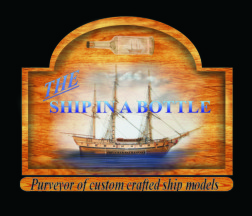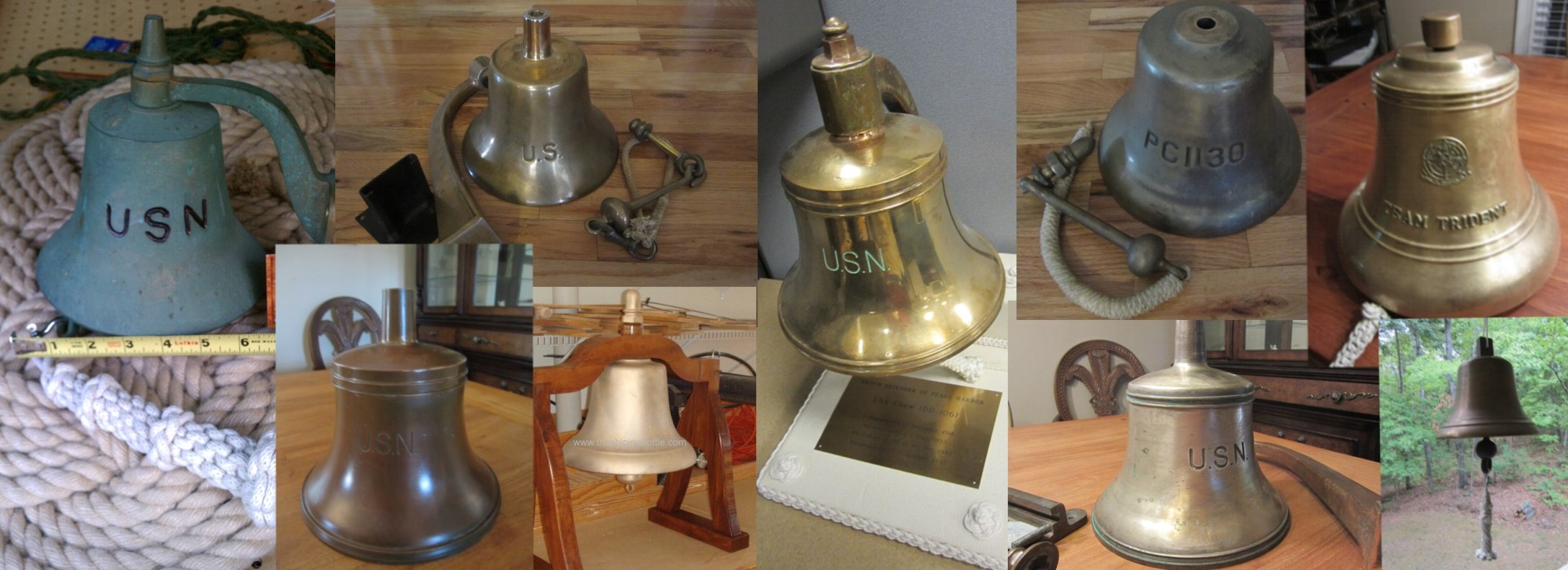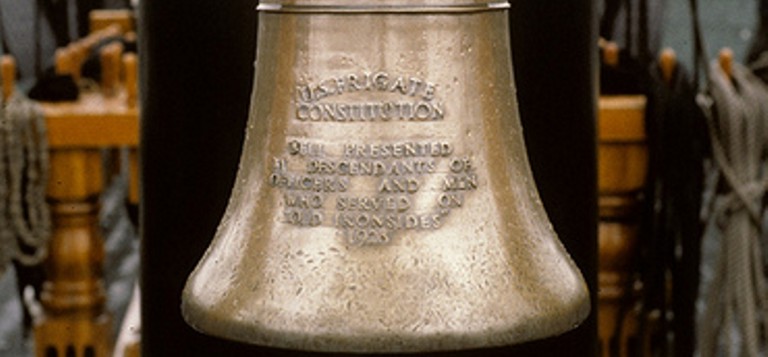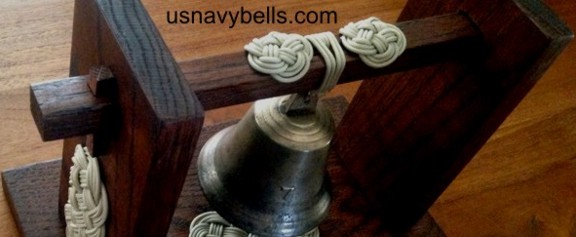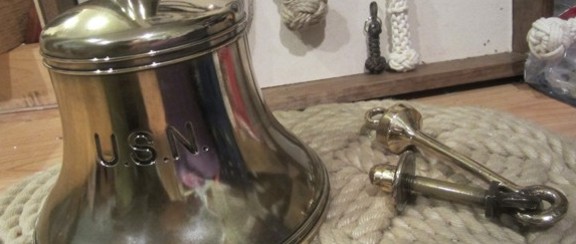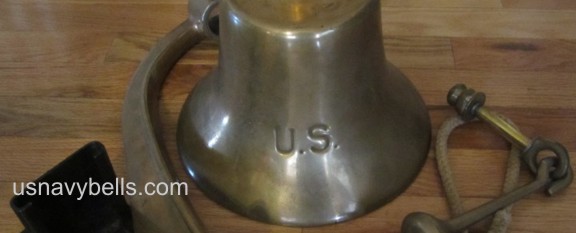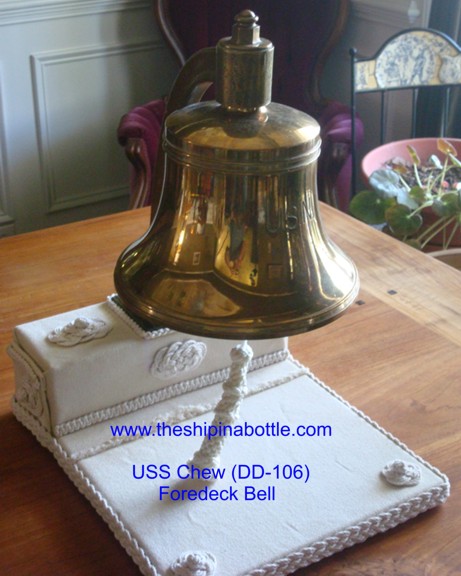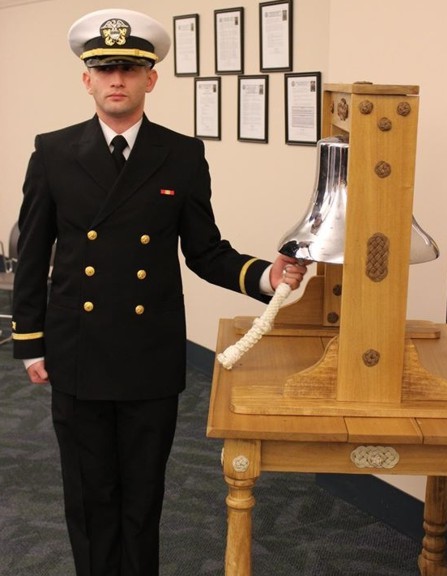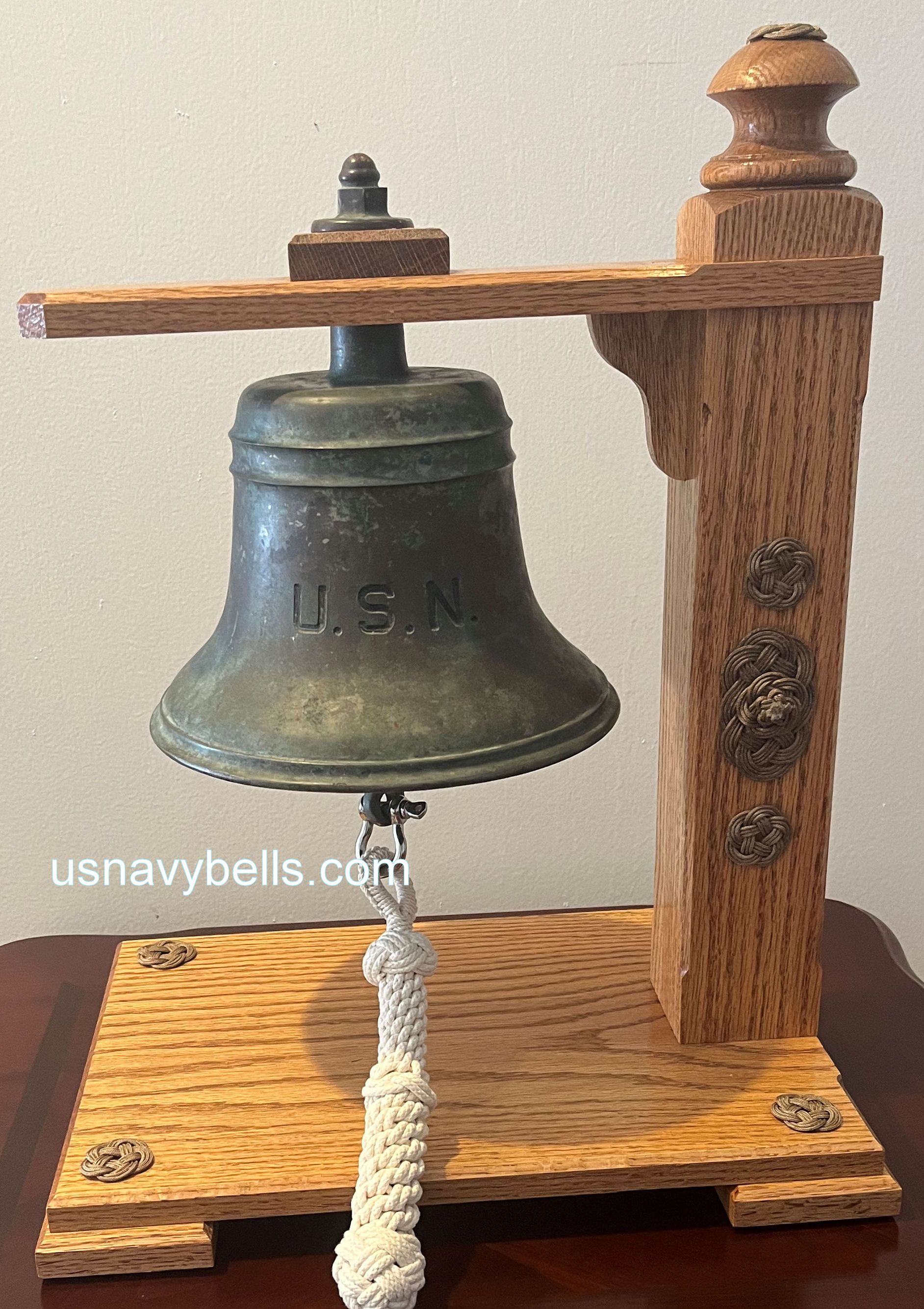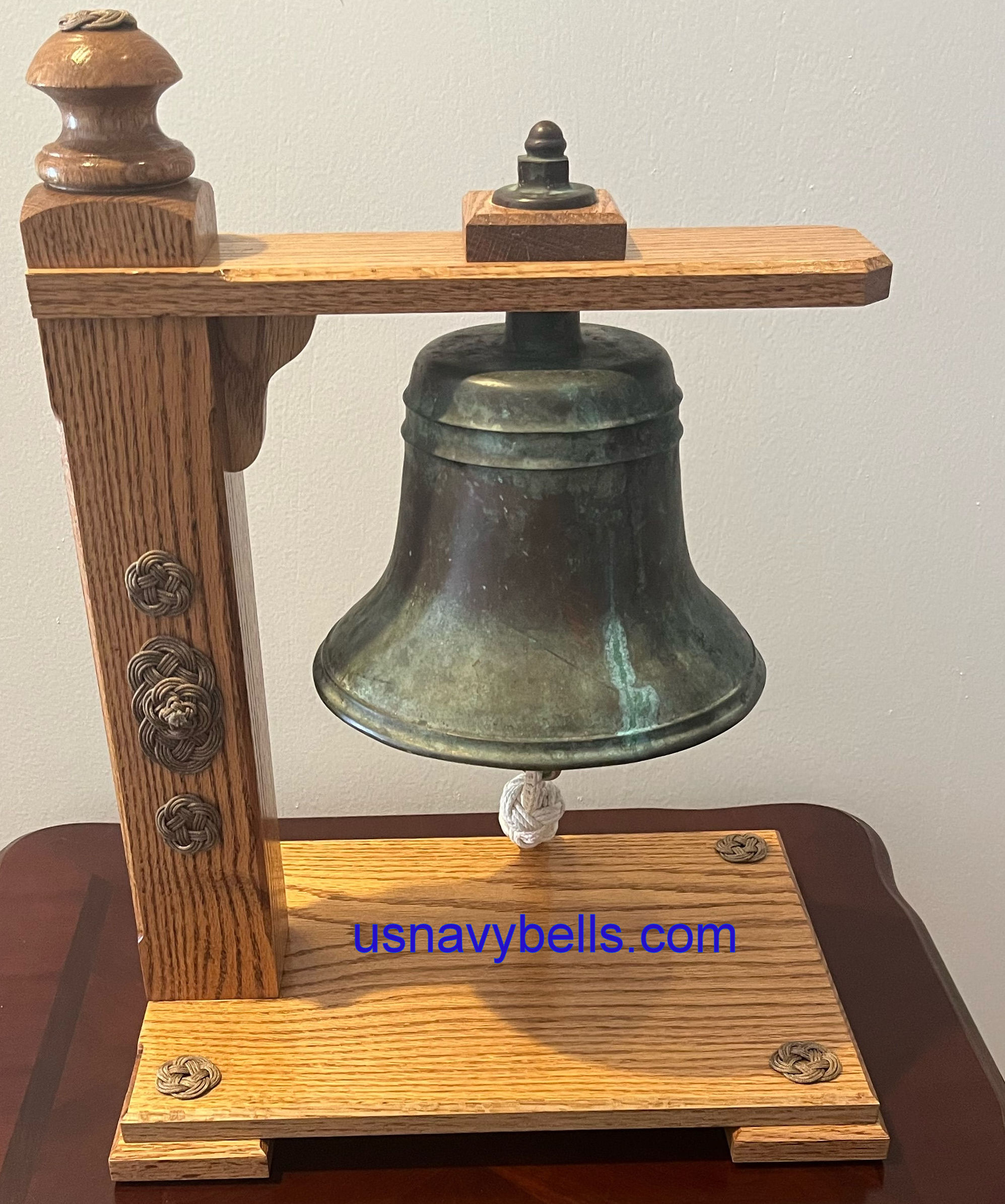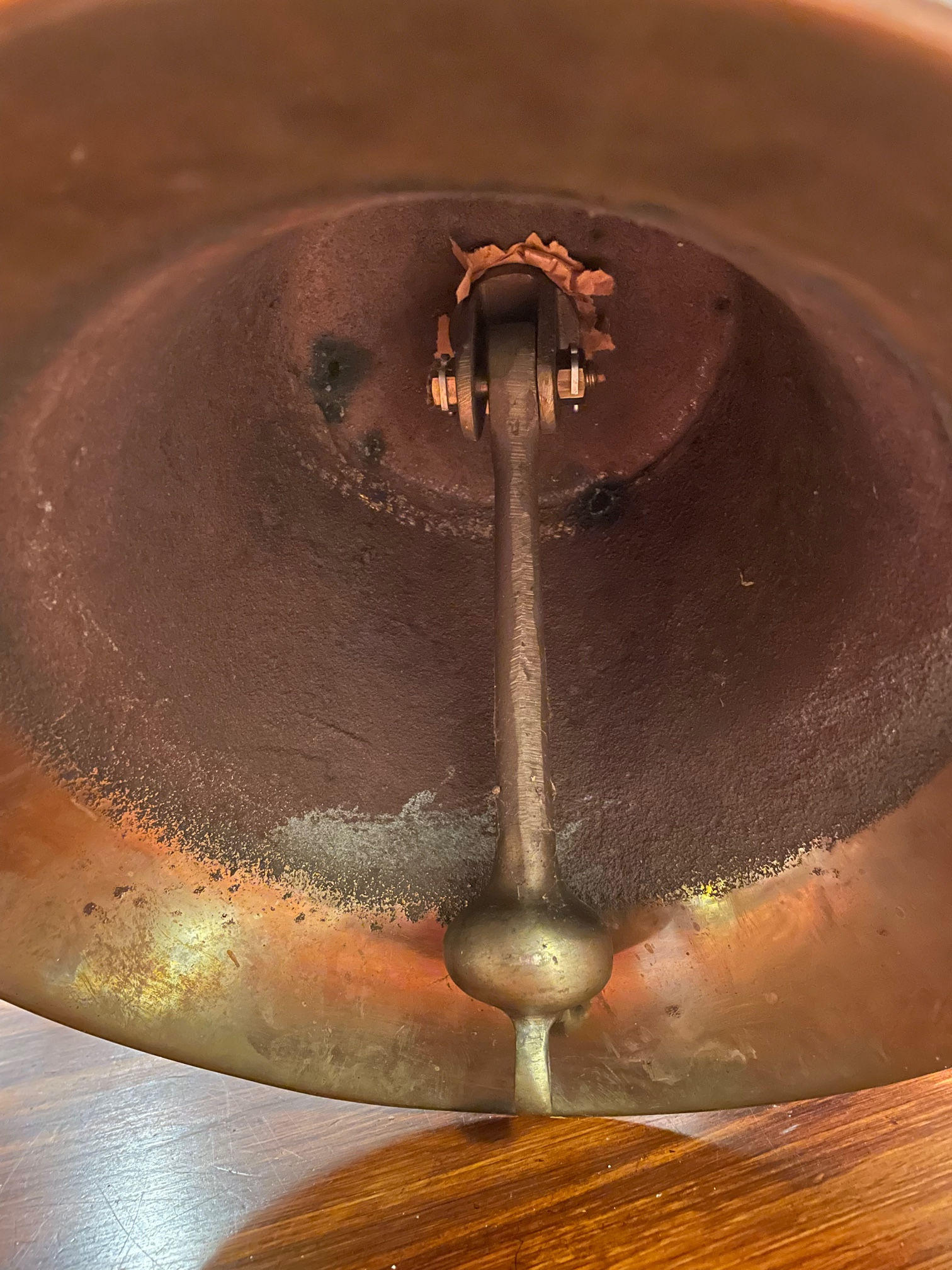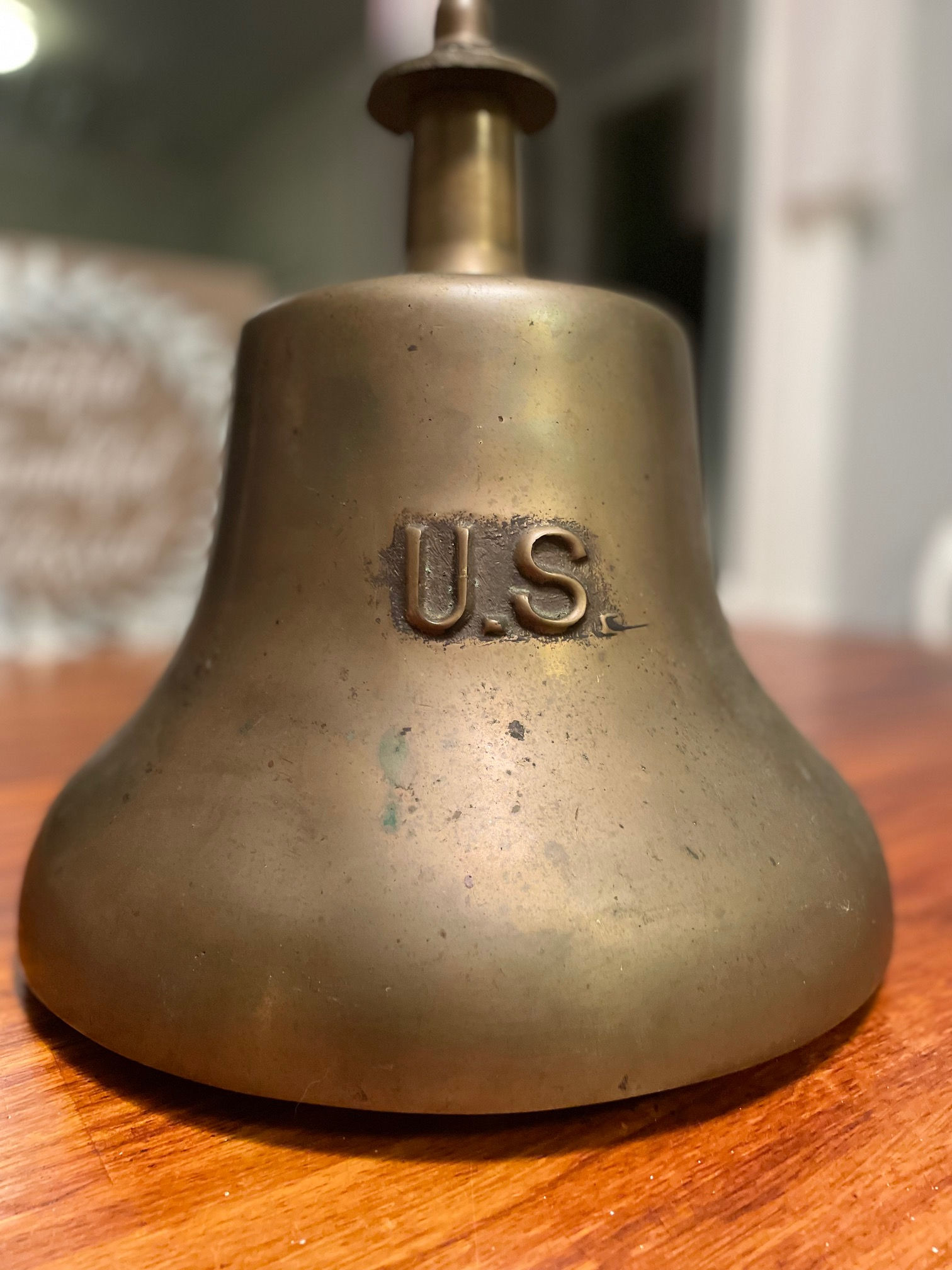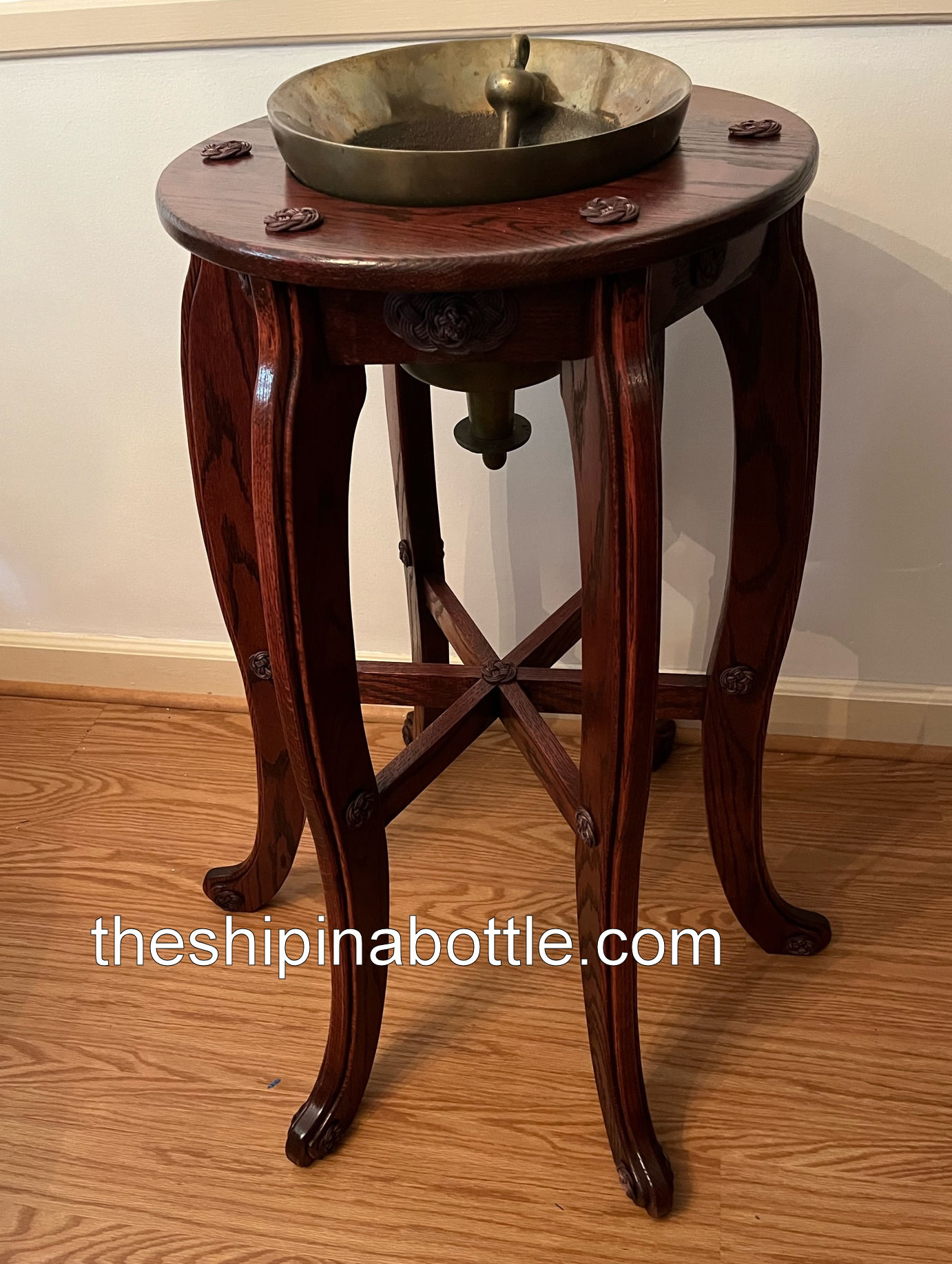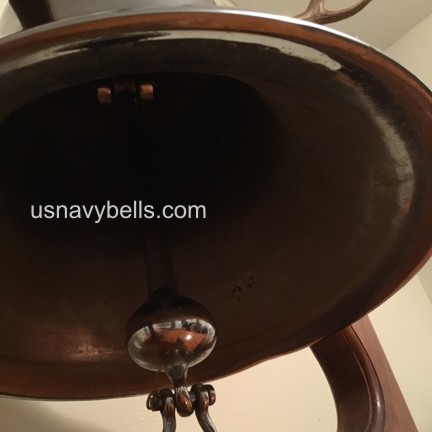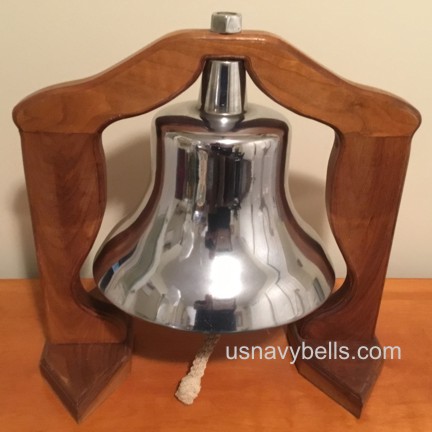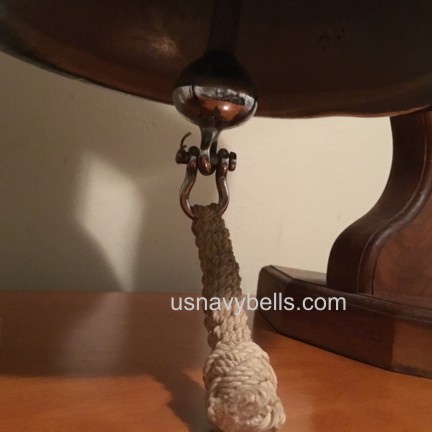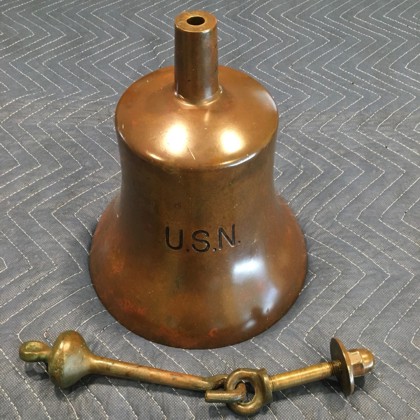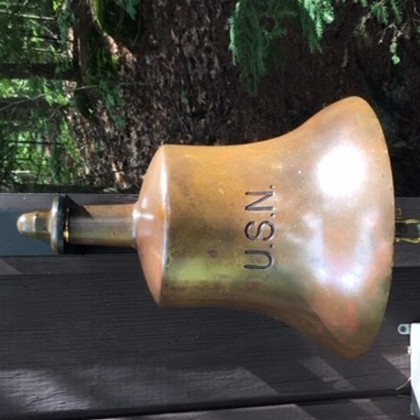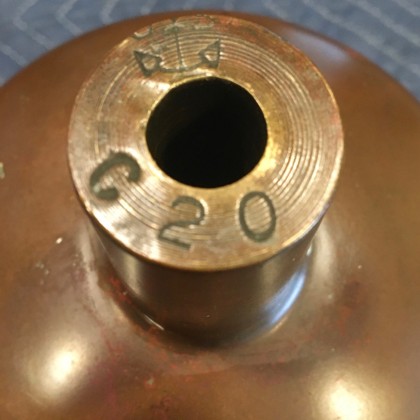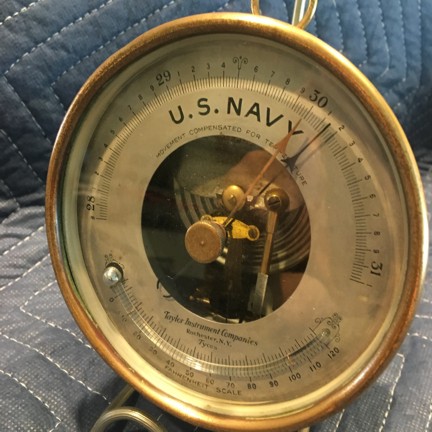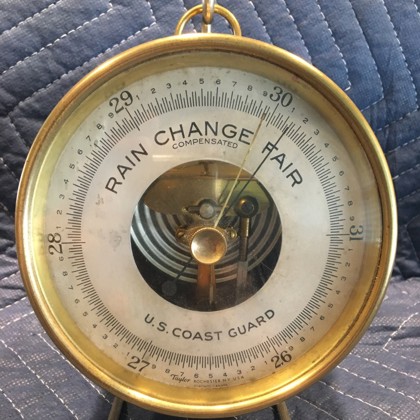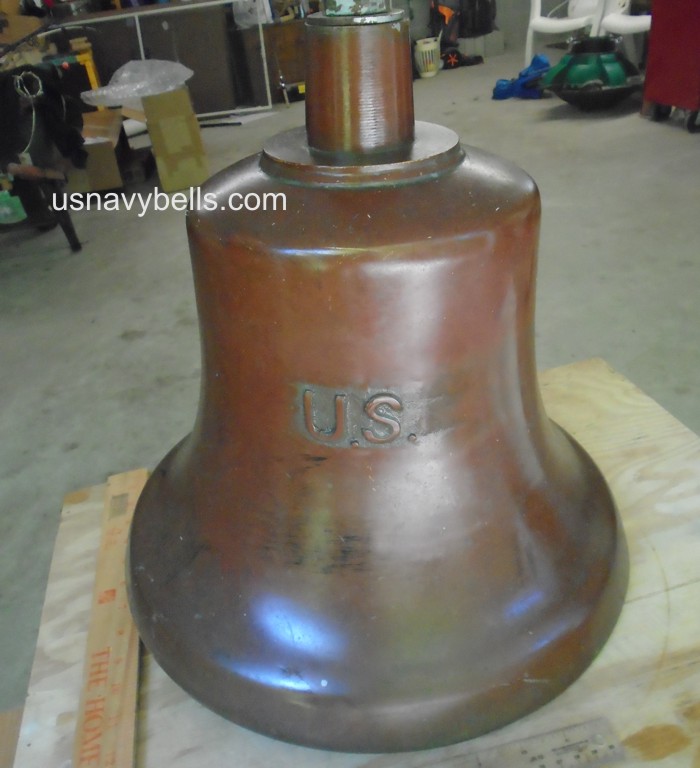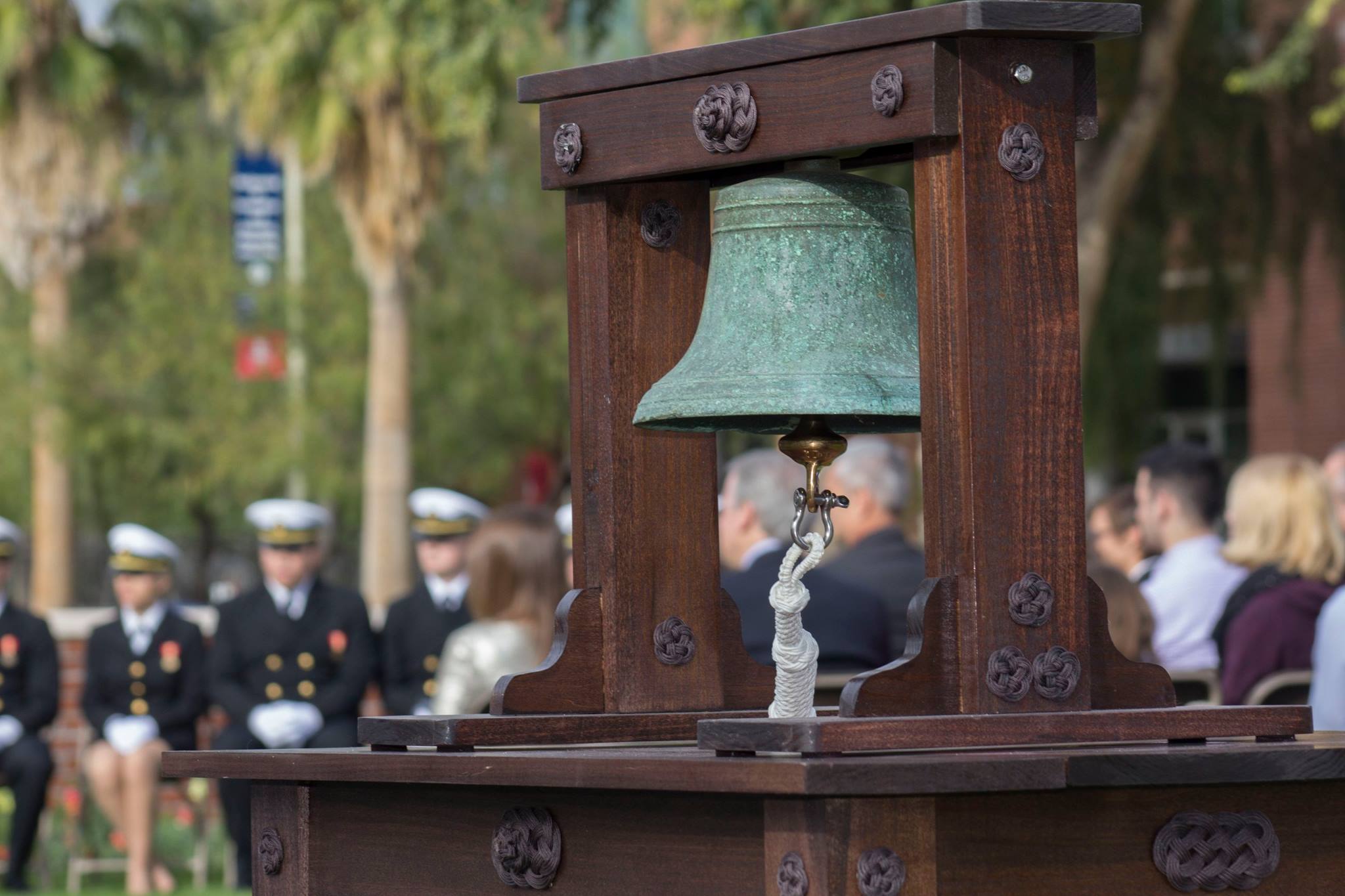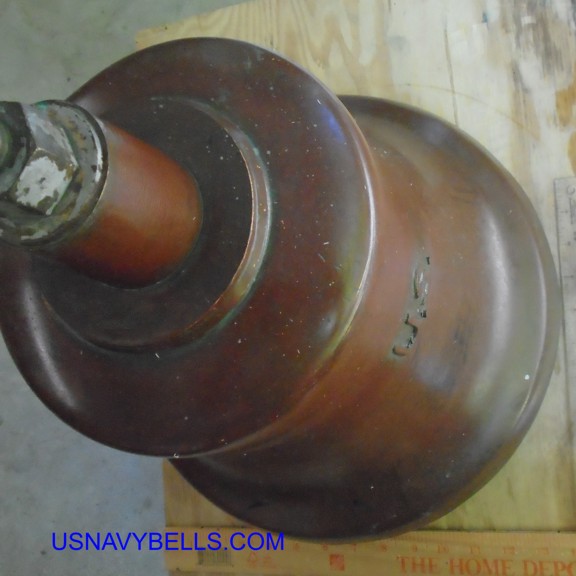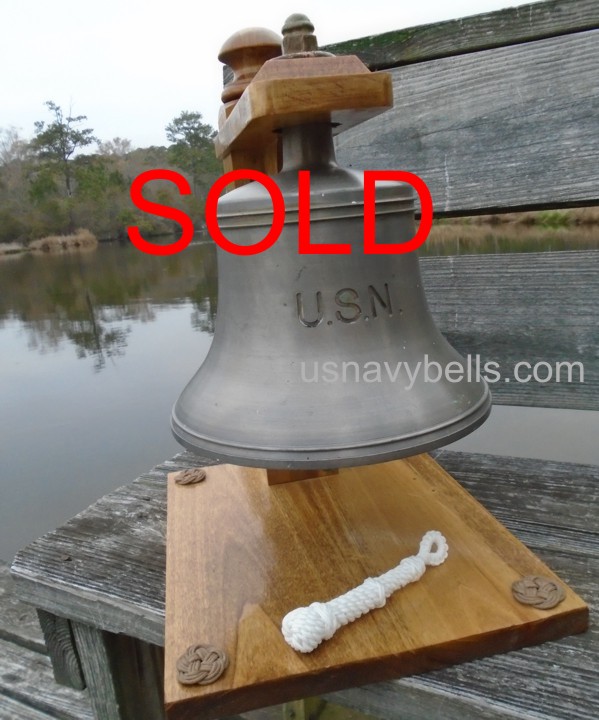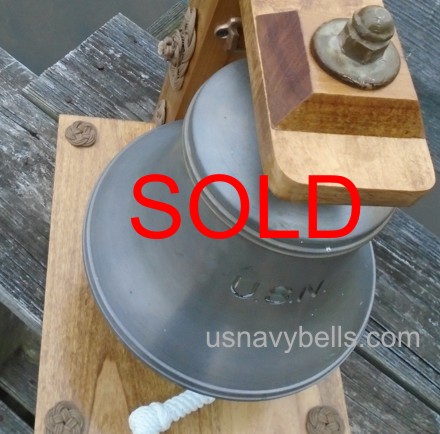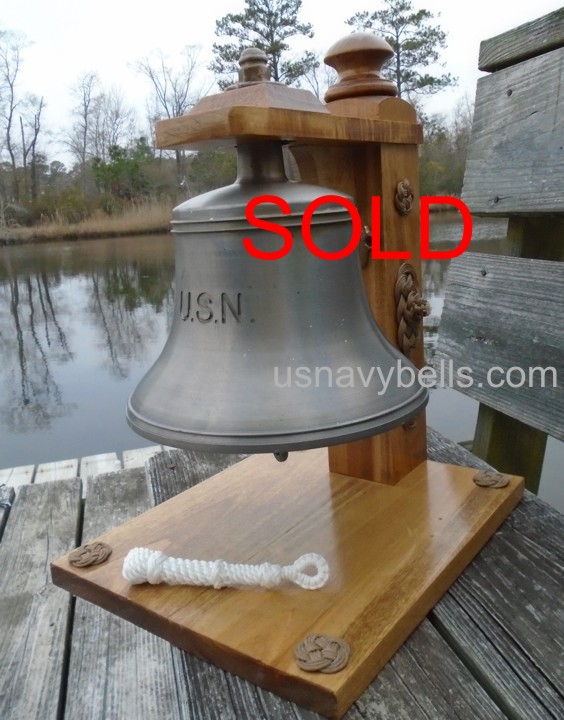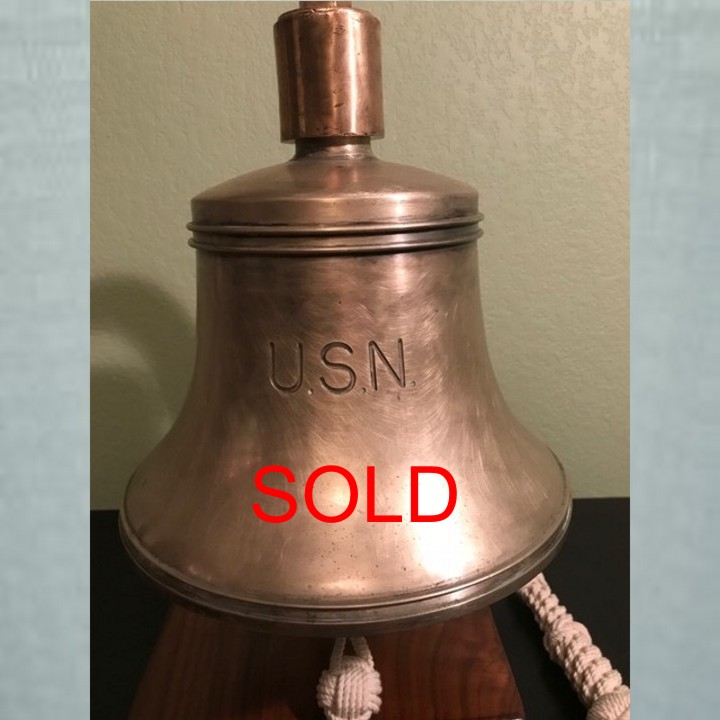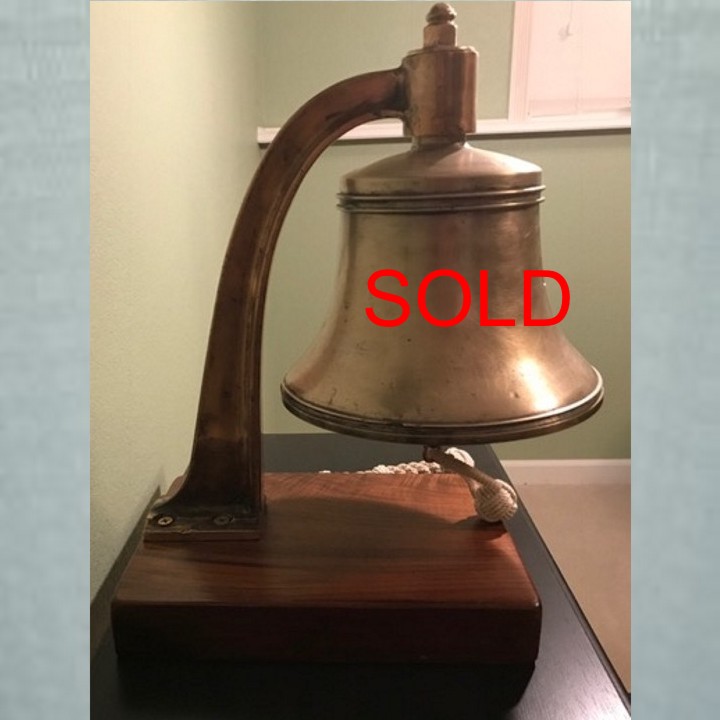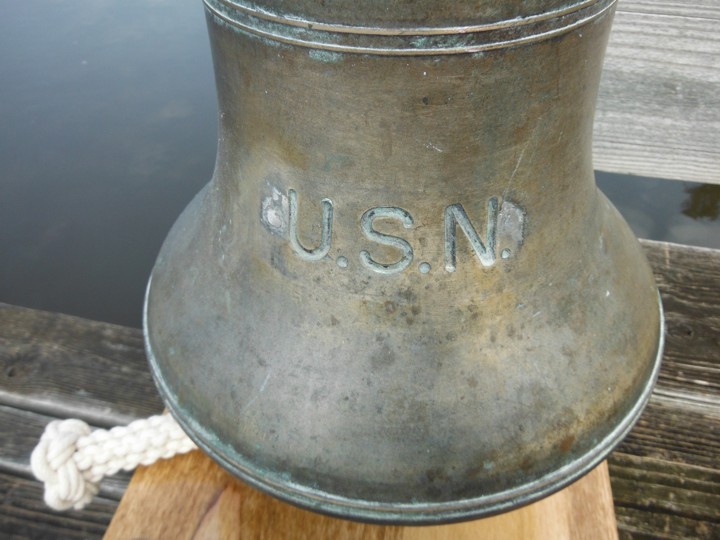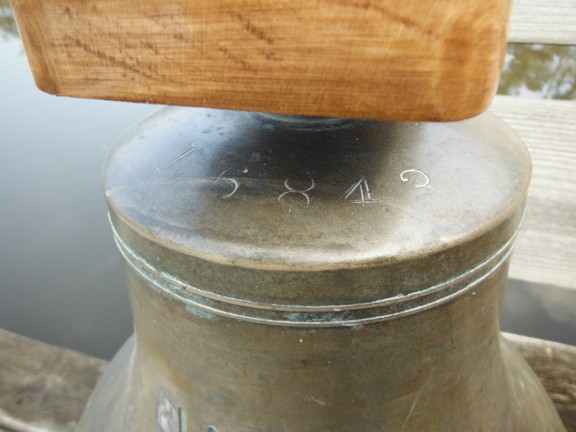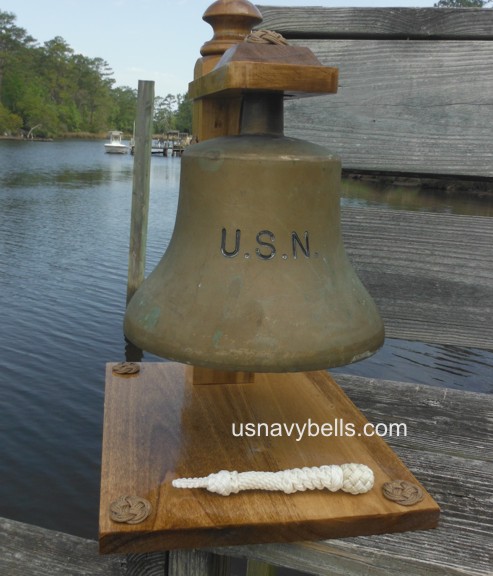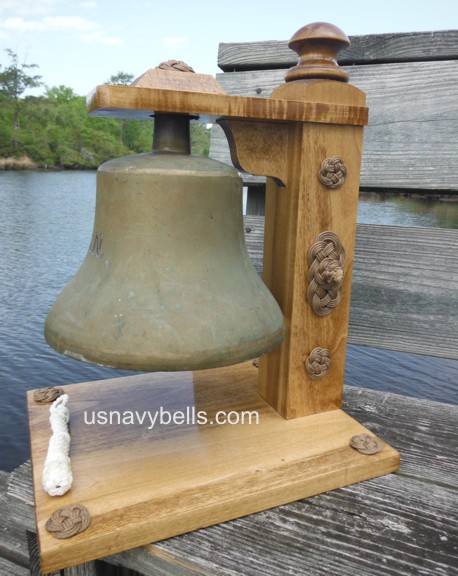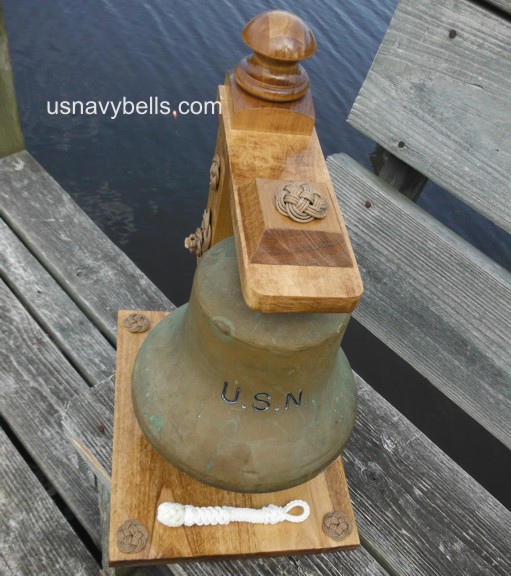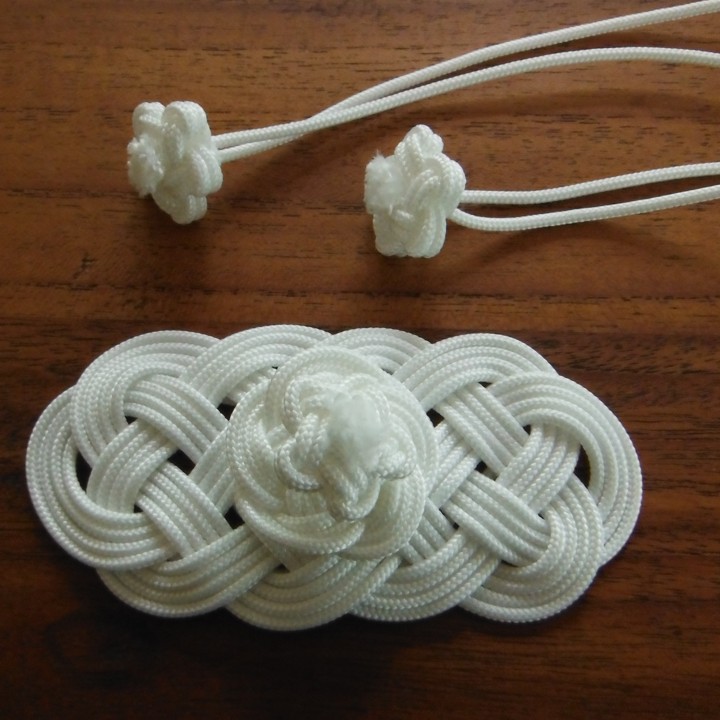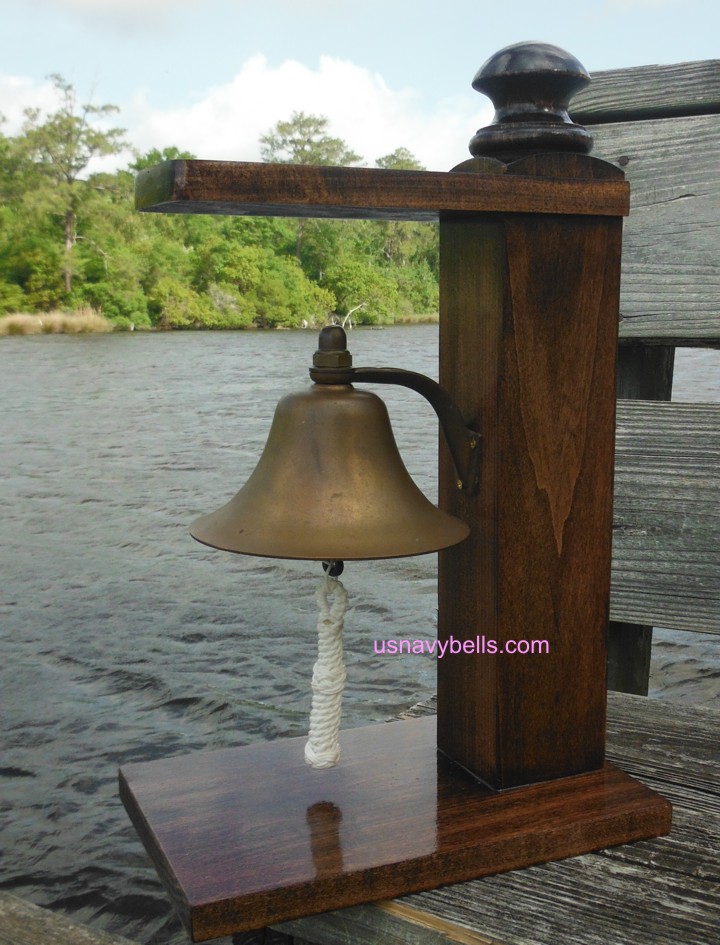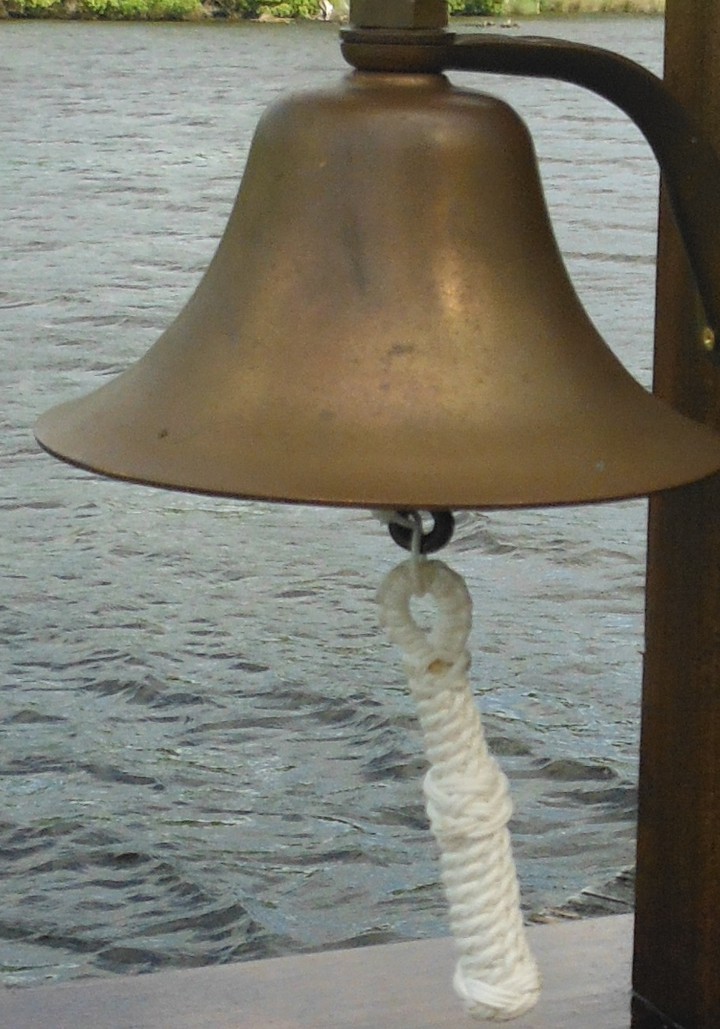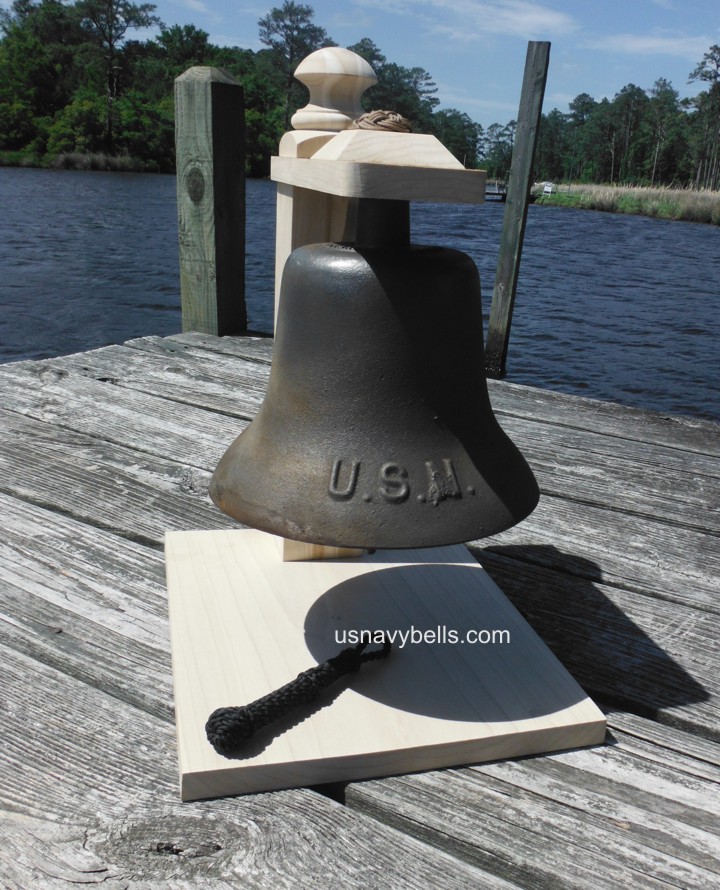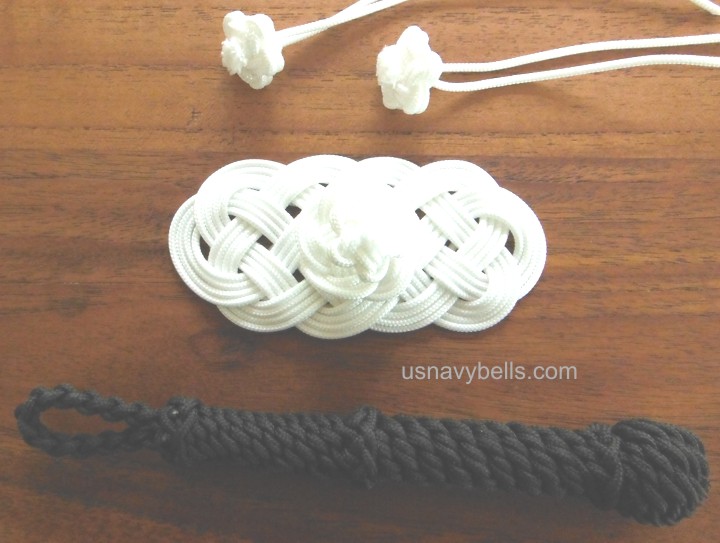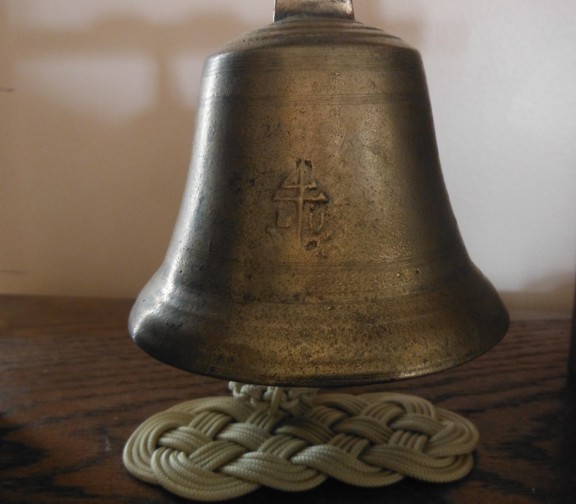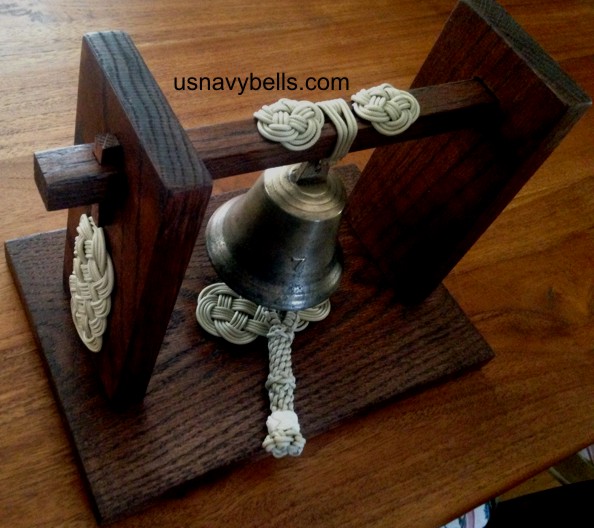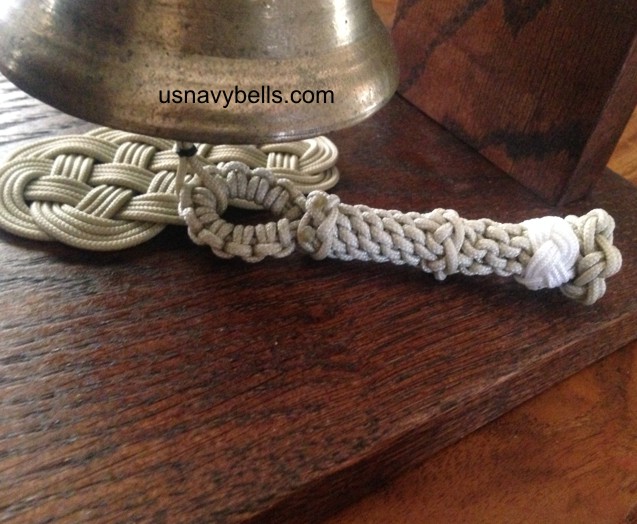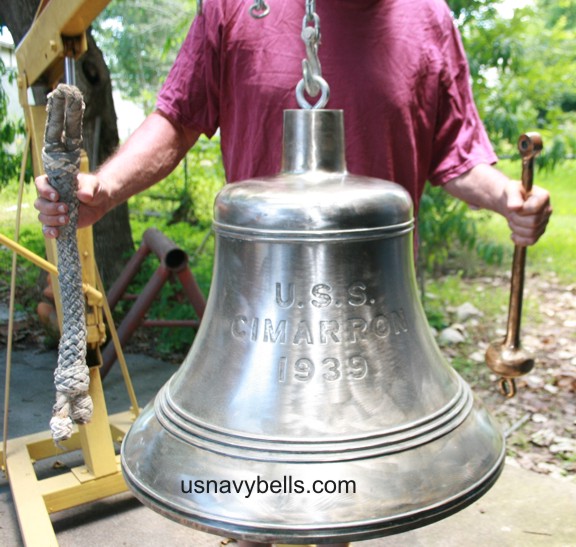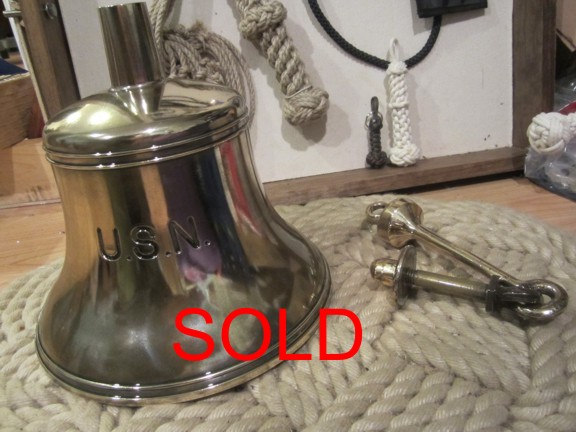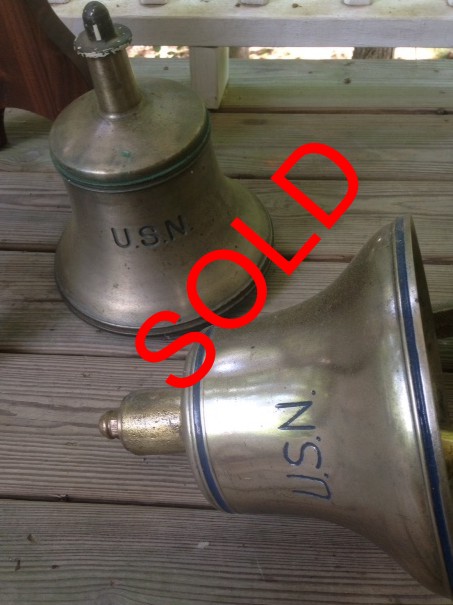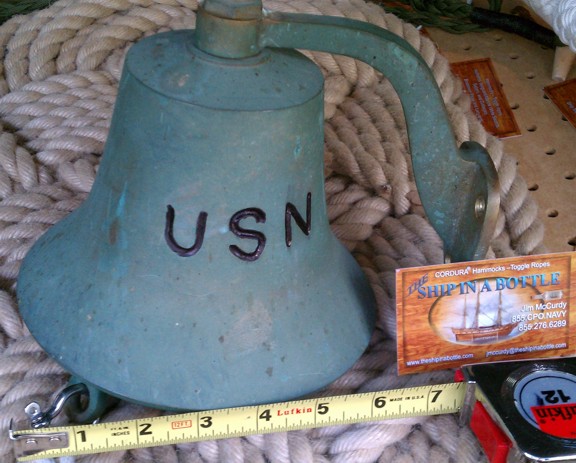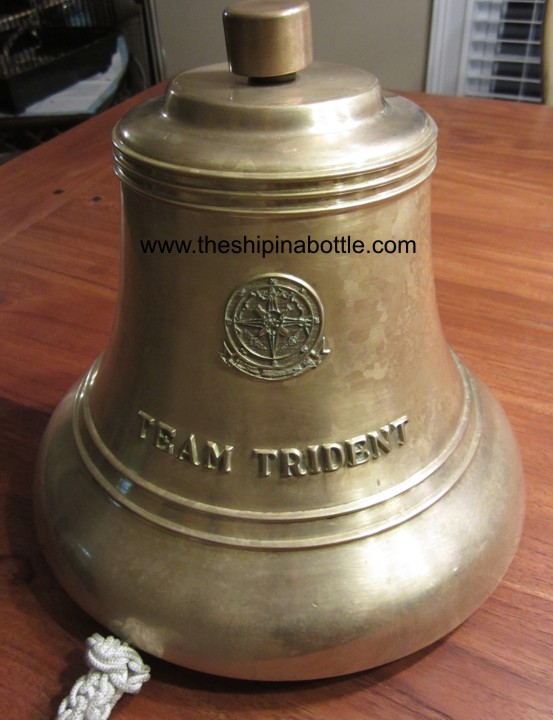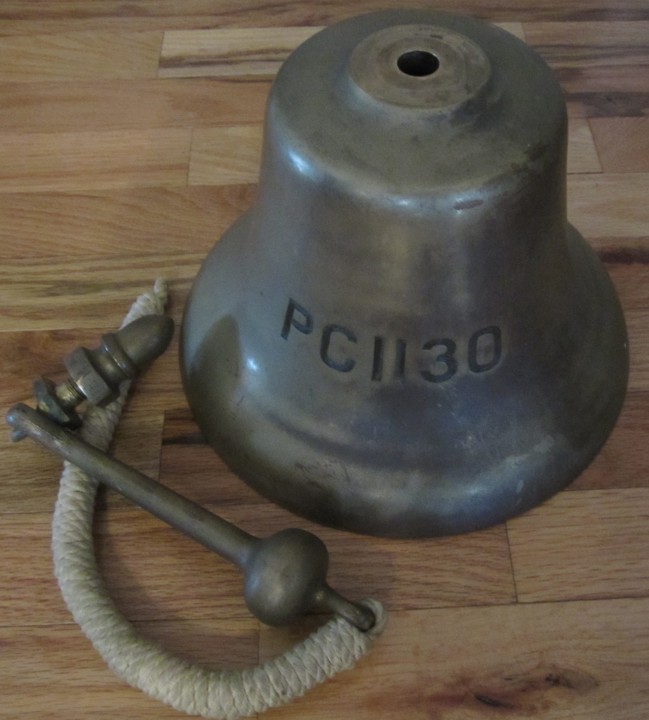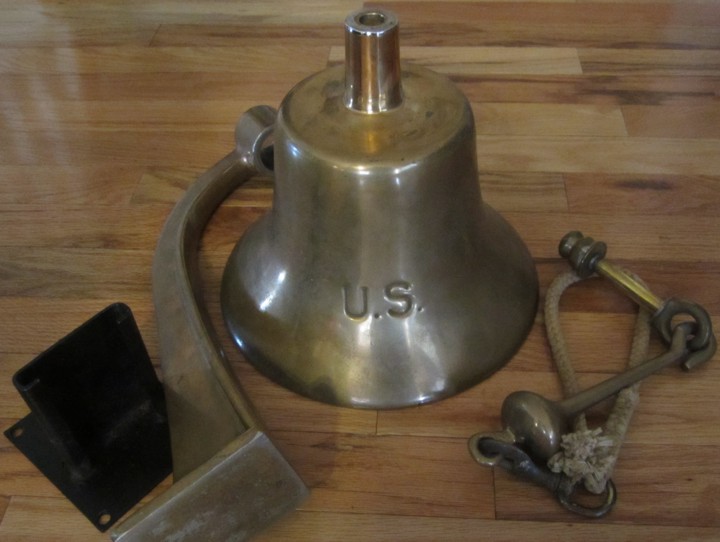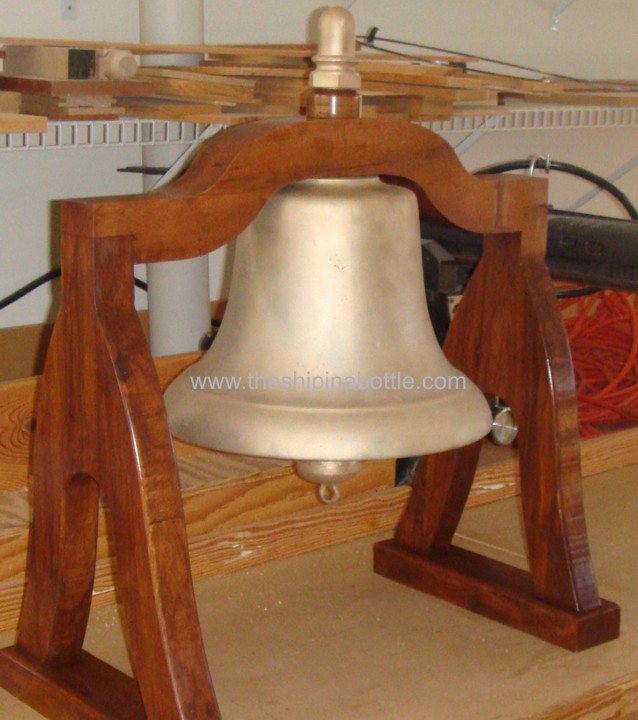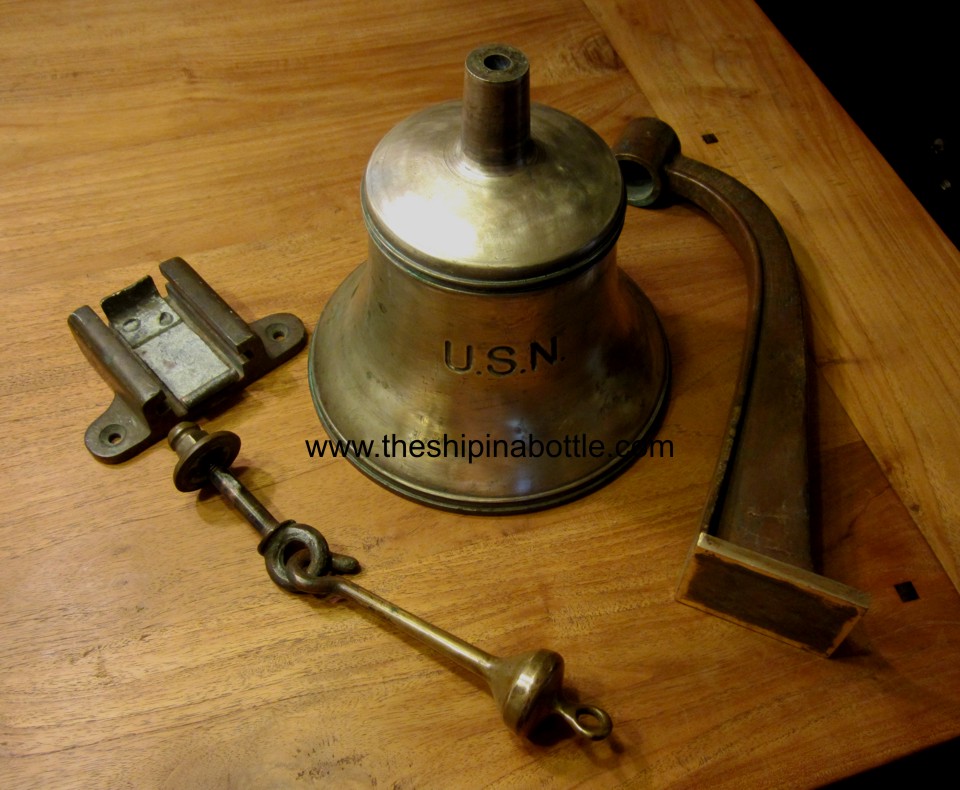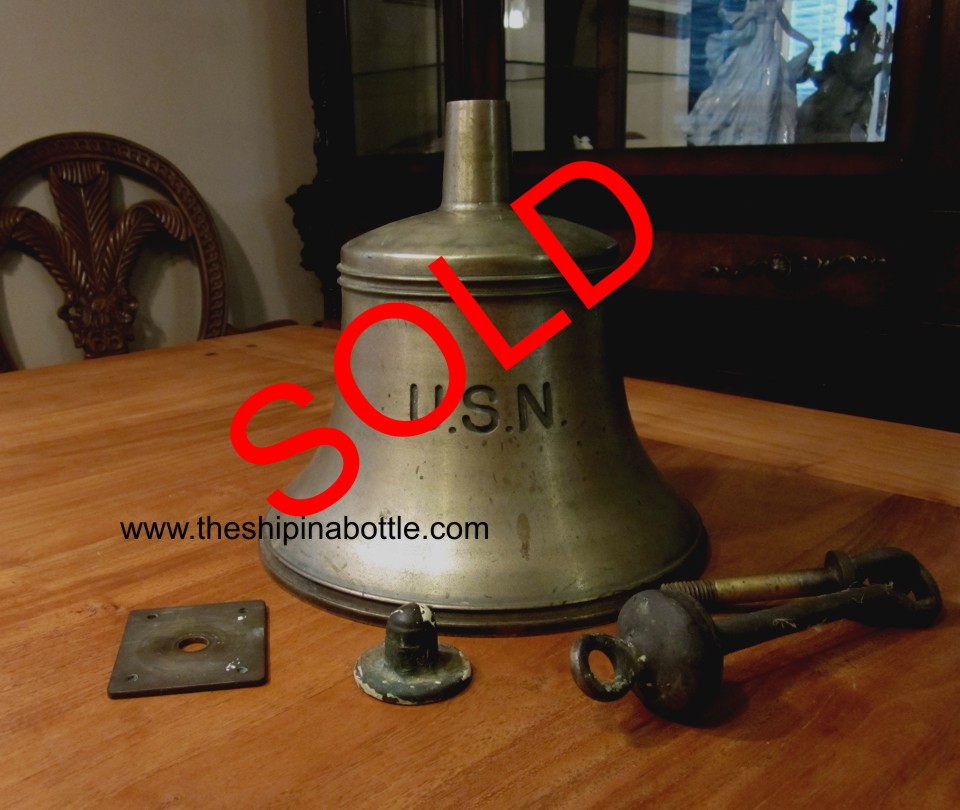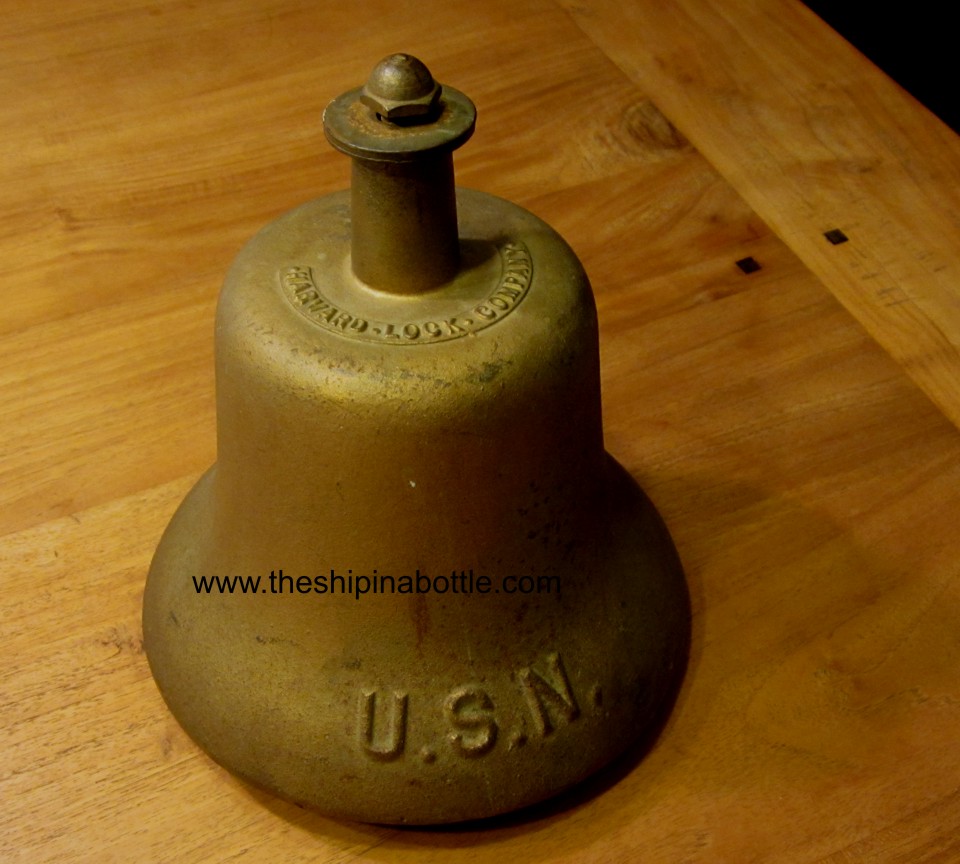NOW THIS IS A BELL..!!
Ship's Bell Onboard USS Constitution
INTERESTING BELL FACTS
The following information is provided by the courtesy of:
DEPARTMENT OF THE NAVY -- NAVAL HISTORICAL CENTER
805 KIDDER BREESE SE -- WASHINGTON NAVY YARD
WASHINGTON DC 20374-5060
In addition to its shipboard roles, the bell serves a ceremonial and memorial function after the ship has served its Navy career.
U.S. Navy bells are part of the many artifacts removed from decommissioned vessels preserved by the Naval Historical Center. They may be provided on loan to new namesake ships; naval commands with an historical mission or functional connection; and to museums and other institutions that are interpreting specific historical themes and displays of naval history. Bells remain the permanent property of the US Government and the Department of the Navy. These serve to inspire and to remind our naval forces and personnel of their honor, courage, and commitment to the defense of our nation.
Traditionally, the bell is maintained by the ship's cook, while the ship's whistle is maintained by the ship's bugler.
In actual practice, the bell is maintained by a person of the ship's division charged with the upkeep of that part of the ship where the bell is located. In such a case a deck seaman or quartermaster striker or signalman striker may have the bell-shining duty.
Bells in religious ceremonies
The bell's connection to religious origins continues. Originating in the British Royal Navy, it is a custom to baptize a child under the ship's bell; sometimes the bell is used as a christening bowl, filled with water for the ceremony. Once the baptism is completed, the child's name may be inscribed inside the bell. The bell remains with the ship while in service and with the Department of the Navy after decommissioning. In this way, an invisible tie is created between the country, the ship and its citizens.
The bell is used to signal the presence of important persons. When the ship's captain, a flag officer, or other important person arrives or departs, watch standers make an announcement to the ship and ring the bell. This tradition extends to major naval command transitions, often held aboard vessels associated with the command
The sounding of a ship's bell found a natural application as a warning signal to other vessels in poor visibility and fog. In 1676 one Henry Teonage serving as a chaplain in the British Mediterranean Fleet recorded , "so great a fog that we were fain to ring our bells, beat drums, and fire muskets often to keep us from falling foul one upon another". Ringing a ship's bell in fog became customary. In 1858, British Naval Regulations made it mandatory in that function. Today, maritime law requires all ships to carry an efficient bell
American ships of the Revolutionary War period and our early national years adopted many of the practices and traditions of the British Royal Navy, including the use of bells. In 1798, Paul Revere cast a bell weighing 242 pounds for the frigate Constitution, also known today by its nickname "Old Ironsides".
It is of interest to note that the use of a ship's bell contributed to the richest single prize captured by the American Navy during the War of Independence. While a Continental Squadron under Commodore Whipple lay-to, wrapped in Newfoundland fog in a July morning in 1779, the sound of ships' bells and an occasional signal gun could be heard a short distance off. When the fog lifted the Americans discovered that they had fallen in with the richly-laden enemy Jamaica Fleet. Ten ships were captured as prizes, which - together with their cargo - were valued at more than a million dollars.
Before the advent of the chronometer time at sea was measured by the trickle of sand through a half - hour glass. One of the ship's boys had the duty of watching the glass and turning it when the sand had run out. When he turned the glass, he struck the bell as a signal that he had performed this vital function. From this ringing of the bell as the glass was turned evolved the tradition of striking the bell once at the end of the first half hour of a four hour watch, twice after the first hour, etc., until eight bells marked the end of the four hour watch. The process was repeated for the succeeding watches. This age-old practice of sounding the bell on the hour and half hour has its place in the nuclear and missile oriented United States Navy at the dawn of the Twenty-First Century, regulating daily routine, just as it did on our historic vessels under sail in the late Eighteenth Century.
FREQUENTLY ASKED QUESTIONS
This can be difficult but as a rule of thumb, the "Naval Artificer's Manual" dated 1918 illustrates the specific design for bells frequently seen on my website and listed as WW1 era bells. Bells listed as WW2 era bells generally have a sharper turn at the top and are of a slightly different design.
This is a term that is vastly overused. The design for mounting on a horizontal surface with the long curved arm are correctly identified as 'Motor Boat Bells' in the Navy Artificer's Manual of 1918. These bells were typically 20 pounders that were cast for navy power boats in the 26-65 foot range.used on. I frequently refer to them as 'utility' bells as they were used on small craft, quarterdecks, bridge, and yes, fore and aft for the anchor watch.
Yes, we do sell some hardware. Please check out the tab at the top of the page "BELL HARDWARE" and you may find what you need there. If you don't see what you need there, your best bet may be to give us a call at (404) 964-8355 and ask.
Yes, depending on our inventory, available funds, and factors such as the condition of the bell and its history. We can also sell your bell on consignment. Call us to learn more about consignment opportuniies.
We are not appraisers but can possibly offer some information that will assist you in determining a price. The value of your bell depends on many factors. Obviously, the condition of the bell comes into play. The originality and completeness of the hardware associated with the bell can alter the value. If there is any history associated with the bell, especially documented with photos, the value can be higher.
Generally no. Navy bells are supposed to remain the property of the US Government, especially those of historical significance. Before I sell a bell on my website, I personally check with the Navy Historical Center to determine whether or not the bell has been reported as lost or stolen and is in fact legal to privately own.
Yes, I personally tie bell ropes in a variety of colors, styles, and sizes. Some of my ropes are 'in stock' but most of my ropes are custom made to meet your needs.
I usually recommend a bell rope that is approximately the same length as the width of the bell.
When available yes but, there are so many different styles and sizes of bells though that it would be nearly impossible to keep the hardware in inventory. But to be certain... give us a call.
MOST DEFINITELY. We custom build a variety of wooden stands and mounts for your bell. We are not a metal shop though and do not make metal stands or bases.
We do offer a restoration service and send our bells off to an automotive restoration shop. The bells and hardware (if applicable) are professionally polished and treated with a coating of automotive clearcoat to maintain the shine. Call us today for a quote.
Yes they are. They are tuned to a certain key that could help indicate the size of a vessel in a fog. For example, the 20 pound motorboat bells are tuned to the key of "A" flat. Destroyers with a displacement greater than 700 tons would have a 75 pound bell tuned to the key of "B" natural. A ship with a displacement greater than 12,000 tons would have an 800 pound bell tuned to the key of "B" flat. This information was taken from my 1918 copy of the Naval Artificer's Manual.
-
Disposition and continuing Navy use
-
Maintenance and upkeep
-
Navy Ceremonies and Events
-
Safety and Communication
-
Timekeeping
-
How can you tell the age/era of a particular bell?
-
What is a 'Foredeck Anchor Bell'?
-
Do you sell bell hardware?
-
Do you buy US Navy Bells outright?
-
Do you offer an appraisal service?
-
Is it legal to own a US navy bell with the ship's name on it?
-
Do you sell bell ropes?
- What size bell rope should I purchase?
-
Do you sell mounting hardware for bells?
-
I need a stand or wall mount for my bell, can you help me?
-
Do you offer bell restoration services?
-
Are authentic bells really tuned?
-
In Summary, We Offer...
- The direct sale of authentic navy and commercial bells.
- The consignment sale of your bell.
- Bell restoration services.
- Custom wooden bell stands, mounts, and tables.
- Custom bell ropes.
